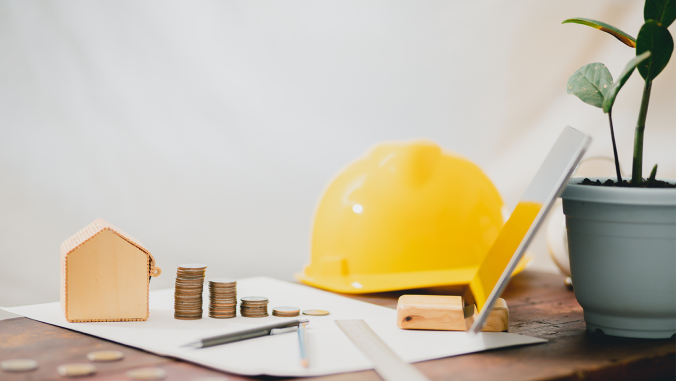Near Hiroshima, Japan eyes opportunities for innovations in recovery and resilience
Technology is providing solutions — but nothing's a silver bullet.

Oyster hatcheries off the coast of the Hiroshima prefecture in Japan. The coasts were hit hard by the flooding, but the oyster catch has been declining for years thanks to climate change and overfishing.
Last summer, for nearly two weeks, heavy rains battered southwestern Japan, from the hundreds of small, rocky islands off the coast to car company Mazda’s headquarters and main factory in inland Hiroshima City. The downpour triggered flash flooding and landslides throughout the region, followed by a weeks-long heat wave, shutting down roads, transportation systems and power — and impeding emergency response teams from immediately reaching the most affected areas and people.
As the record torrential rains slowed, emergency workers continued search-and-rescue operations, bringing fresh water, food and resources to houses and community centers that had been deluged. Drone operators flew the aerial devices over forests and ravines to canvass the damage to infrastructure. And officials tried to take stock of the reports coming in to get things "back to normal" as soon as possible.
For responses to natural disasters — floods, earthquakes, volcanoes, hurricanes — speed is key. But to recover from them, so is strategy. And as the climate continues to change, meaning that natural disasters occur with increasing frequency and severity — pushing the bounds of what "normal" means — responses are changing, too.
As an island nation in the Pacific Ocean, Japan is already one of the most vulnerable nations in the world to natural disasters, not to mention rising sea levels. And it's no stranger to both natural and manmade devastation, more recently from the 2011 Tōhoku tsunami and earthquake and subsequent Fukushima Daiichi nuclear disaster, all the way back to the 1945 Hiroshima and Nagasaki atomic bombings.
Still, the government knows the risks it faces, and has disaster preparedness plans and risk reduction initiatives in place at both local and national levels, widely regarded as some of the best in the world.As the climate continues to change — pushing the bounds of what 'normal' means — responses to natural disasters will have to start changing, too.
I had a chance to see this firsthand recently, during a trip to the Hiroshima region in southwestern Japan. During the four-day February visit, a group of reporters, guests of the Japanese government, had the opportunity to visit city officials and corporate offices to learn about how Japan came back from the last disaster — and how it is planning for the next one.
In addition, the country is experimenting with original and creative long-term recovery plans to simultaneously help communities recover and deal with ongoing social problems in the hopes that it can incentivize more long-term sustainable (re)development.
How natural disaster responses work

In Japan, emergency responses involve coordination at three levels of government (national, prefecture and municipal) along levels from one to five (normal, alert, warning, prepare for emergency and emergency). The country is constantly updating its emergency preparedness plans and currently, many rely heavily on warning systems and evacuation. Cities such as Tokyo — the riskiest metropolitan area in the world, according to a 2014 study (PDF) by Swiss Re — have taken steps to build a series of massive (and expensive) underground tunnels and cisterns to safeguard against potential rains and flooding.
But southwestern Japan has different resources and vulnerabilities, and the response to rains there had to reflect that. It has a more rural environment and an aging population, and manufacturing and agriculture are its main local livelihoods. These conditions can be issues in themselves for emergency responses; elderly people can’t — or in some cases, won’t — evacuate. In addition, farmed land can be at risk because natural disasters can devastate crops, affecting not only food sources but also the potential for exporting and making money that way. And when manufacturing, such a large portion of a region’s economy, is threatened, it can hamper immediate economic recovery and even slow long-term growth in the future.Southwestern Japan has some key vulnerabilities including an aging population, with manufacturing and agriculture as the main local livelihoods.
The aging population combined with the troubles for agriculture and manufacturing already were poised to cause complications for the region, even prior to the floods and the continuing threat of natural disasters. Younger citizens had been moving away from the countryside and to bigger cities, and the aging population had begun costing the government more money in costs of care, lost productivity and the lowered ability to work in the local labor-intensive agriculture.
A major solution that the region is relying on to tackle these interconnected issues? Technology.
"With the aging population, [U.S.] protectionism and climate change, going forward, we’re tackling that through innovation," Kaiho Sugai, Office of Global Communications’ researcher on public affairs, told us at the press briefing in Hiroshima City.
Natural disaster-responsive technology
Technology has been playing an increasing role in disaster responses as smaller unmanned aerial vehicles and improved imaging have come online in the past few years. Both need wireless connectivity to work, so as the speed and size of networks continue to grow, it helps with the effectiveness of the technology.
During and after the heavy rains in the Hiroshima, Kyoto, Okayama and Ehime regions, over 70,000 first responders and officials used digital imaging and aerial robotics for rescue efforts and surveying damage. They also used social media to find people who had been left stranded in their homes as flooding cut off access to roads and transportation.
However, according to a survey by the Ministry of Agriculture, Forestry and Fisheries, the rain disaster caused $203.2 million to the local agriculture, forestry and fisheries industries. In addition, catastrophe modeler AIR Worldwide estimated that residential, commercial, industrial and automobile property losses cost between $2.6 billion and $4 billion.
As officials looked to once again spur economic development in the region to overcome the financial and socioeconomic hits from the rains, they turned to technology again.
Innovative projects to bolster resilience
National Japanese government officials are working on innovative new projects to reinvest in the region itself, and in solutions for the area's societal problems. A significant one is called Project Sandbox.
The Sandbox is a technology incubator and accelerator that offered $8 million to several startups over three years in the Hiroshima prefecture. It looked for early- to mid-stage startups based in Hiroshima that use the internet of things (IoT) and artificial intelligence (AI), capitalizing on the connectivity and network connections in place. Over 80 groups applied, and the nine with the most promising solutions for the Hiroshima region were chosen.

A few of the Sandbox startups' ideas include sensors for cribs that enable remote monitoring, requiring fewer employees to watch children — important as many careworkers age out of the workforce while more mothers enter it. IoT on sensors in the region’s coastal oyster farms enable aging fishermen to know the locations of the shellfish to avoid strenuous work and prevent dredging the fragile ecosystems. And a drone company can help with emergency disaster response and search-and-sense efforts within 2 miles of and after an earthquake in two days — compared to the three weeks it would have taken humans.
In addition, the Sandbox project worked to connect its startup teams with larger companies to foster collaboration. In the hills of Kure, in the Hiroshima Prefecture, lemon farmers have formed a cooperative — the Tobishima Citrus Club — and are working with a utility communications provider, Energia Communications (EneCom), to develop agtech solutions for their graying farms. In the works is a solar-powered sensor system that tracks real-time conditions, tree-by-tree, to gain more insights for water and fertilizer use.
Hiroyuki Takeda of EneCom told us about his ultimate visions of the project: "Drones will provide imagery of the lemon farms. For the harvest season, we have a plan to use four-legged robots that can carry (40 pounds) of lemons up and down steep ground."It’s about, 'how can we create not just jobs but good, interesting, innovative jobs,' to keep the local economy going and the region more resilient to risks.
The family lemon farms in the region are getting "modernized," said the chief innovation officer of the Hiroshima Prefecture, Atsuhito Uemaru, at the briefing. Given the demographic shifts, he described that effort as "how can we create not just jobs but good, interesting, innovative jobs," to keep the local economy going and the region more resilient to risks.
The Sandbox is just one of Hiroshima’s high-tech initiatives to retain talent and develop solutions. The region is also home to Innovation Hub Hiroshima Camps, co-working spaces for entrepreneurs, and the Innovation Training Program at the local Hiroshima University, a business program that offers collaboration with Silicon Valley.
The national government is planning investments in other regions of the country, as well, but is mostly looking for foreign direct investments (FDI) for development projects.
While technology isn't a panacea to the region's ongoing issues and the threats of natural disasters as they arise, it can provide useful tools, especially when developed for specific questions. And as the impact of global climate change on weather events and natural disasters continue to create losses in lives, homes and productivity in regions all over the world, innovative solutions to mitigate and adapt will need to not only be invested in but also implemented.
Natural disasters pose unmistakable perils to the places they hit, but there's a slight silver lining to the dark clouds: the chance for new policy — and investments — to tackle multi-faceted social problems.





